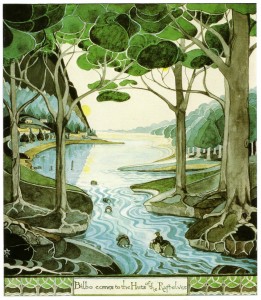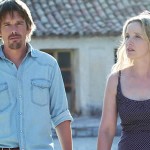 I’m tempted to post the new trailer for The Hobbit: The Desolation of Smaug for you…
I’m tempted to post the new trailer for The Hobbit: The Desolation of Smaug for you…
… but, well, I’ve seen it.
And, no.
I’d like to forget the whole thing as soon as possible.
Watching this trailer, I see that all of my worst nightmares about what Peter Jackson and Company would do to that wonderful book have come true.
It shows that everything they screwed up in the first film, An Unexpected Journey, they’ve done again — and, it appears, worse — the second time around.
It represents a betrayal of the source material.
In my book Through a Screen Darkly, I detailed some of the ways in which Jackson confused and even contradicted Tolkien’s primary themes and convictions in The Fellowship of the Ring, The Two Towers, and especially The Return of the King. But still, there was enough respect and enthusiasm for the source material for me to find more pros than cons, especially in Fellowship. I also wrote about meeting Jackson face to face, in the company of other disgruntled Tolkien fans and film reviewers, and hearing him try to explain why he changed so much about the conclusion of that epic. His answer clearly revealed that he did not understand what was most important to Tolkien. In fact, his intentions were to convey the opposite.
But The Hobbit movies are, so far, a greater debacle.
An Unexpected Journey and, if this trailer is a fair representation, The Desolation of Smaug deal a severe blow not only to the novel but to the power of Jackson’s own previous films. They do so by constantly copying moments and tactics of those movies and amplifying them, so that future moviegoers who watch the movies in order will find the power of those original moments to be diminished. (How many times did Jackson wink and remind us of our favorite moments from the earlier films? The ring falling onto a finger, Gandalf losing his temper and swelling up in a shadowy aura, the Moth who comes to the rescue, wargs attacking, etc.)
That’s to say nothing of how quickly Jackson moved to revise scenes so there could be as many violent clashes and showdowns as possible, how many important moments he abbreviated or skipped in order to make room for brand new battle scenes that upset the arc of Tolkien’s story.
In other words, Peter Jackson’s The Hobbit is turning out to be, for many of us who love the book, a failure of Phantom Menace proportions.
Here’s a simple test: Look at this painting by J.R.R. Tolkien himself, an image beloved by his readers for decades.
When you look at this image, do you find yourself wishing there were more violence in it?
“There’s not enough fighting in this picture. It would be so much better if, while Bilbo and the dwarves were floating down the river, they were attacked!” Is that what you’re thinking?
If so, then you’re going to love The Desolation of Smaug.
The rest of us, meanwhile, will hope — probably in vain — for someone to make a movie of… you know… that book by J.R.R. Tolkien.
In fact… I can’t believe I’m saying this… but this version of The Hobbit may end up being the one that best represents Tolkien’s story.













